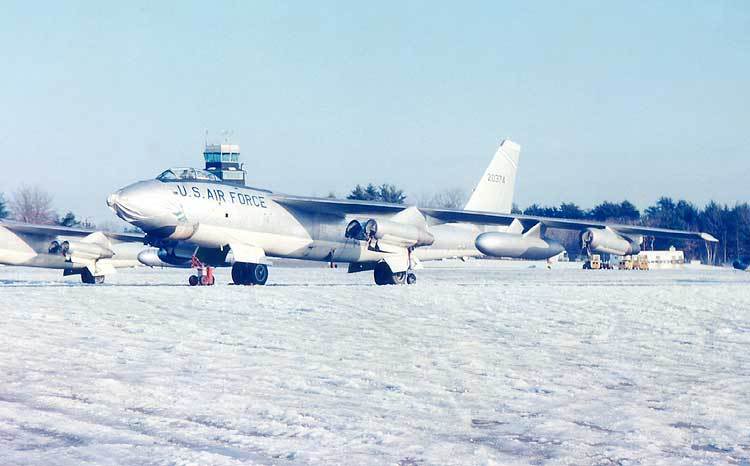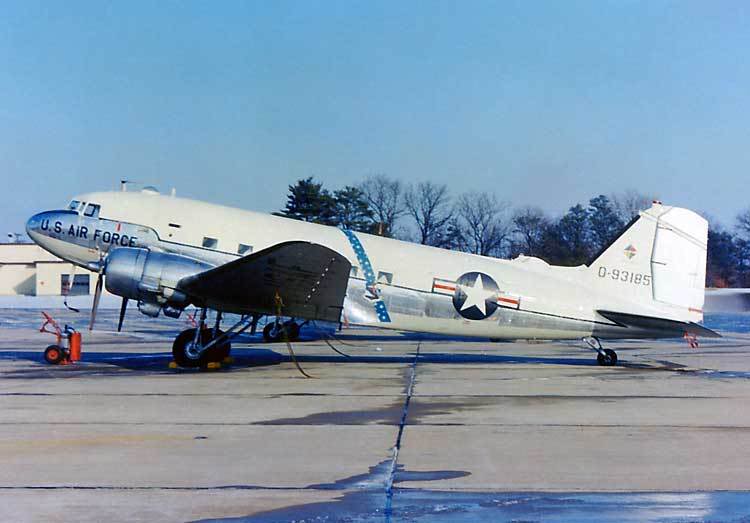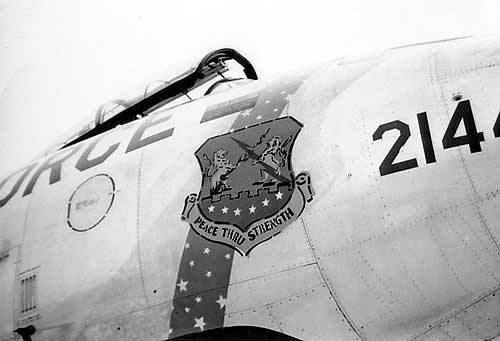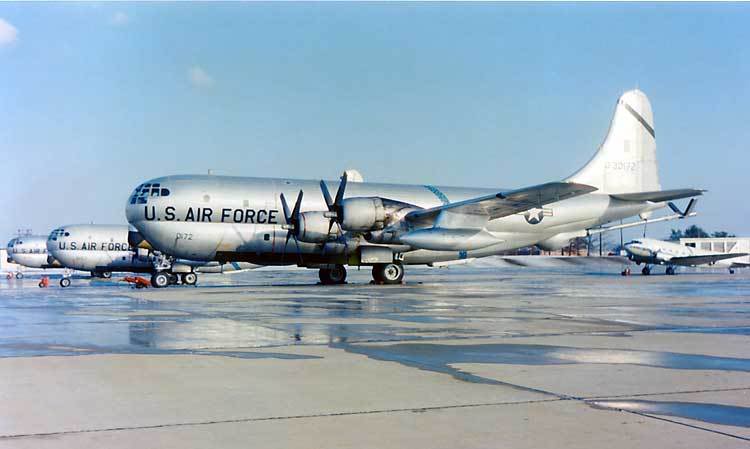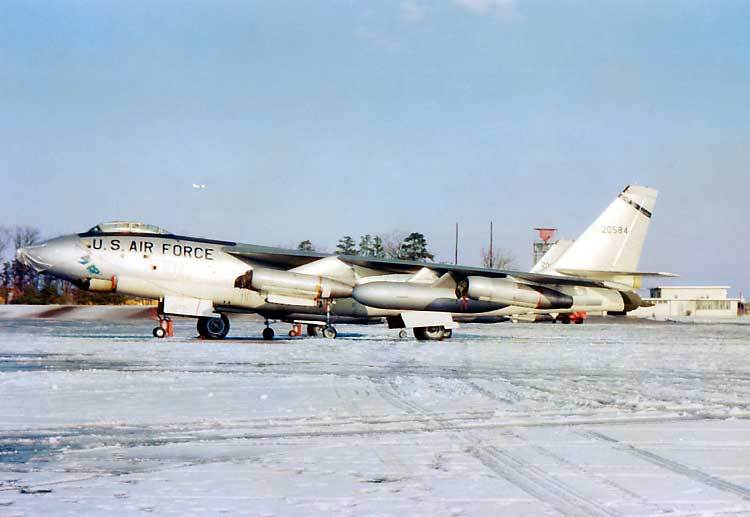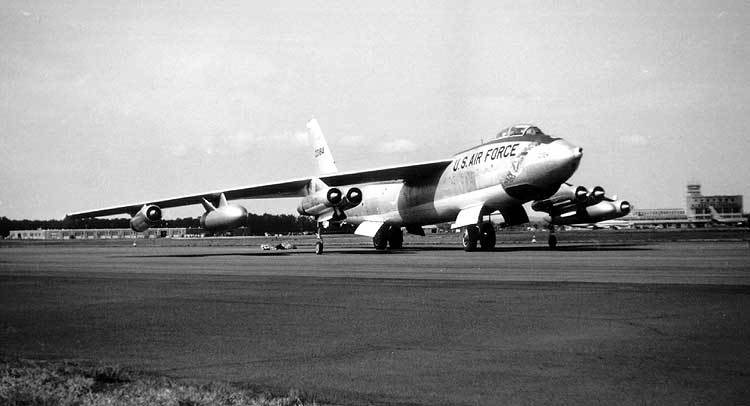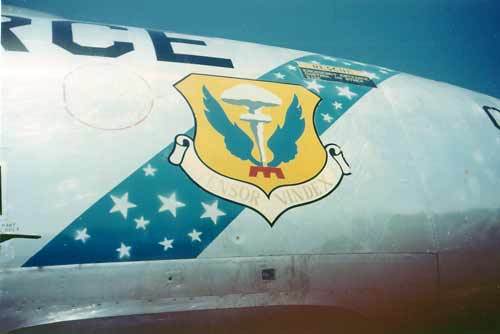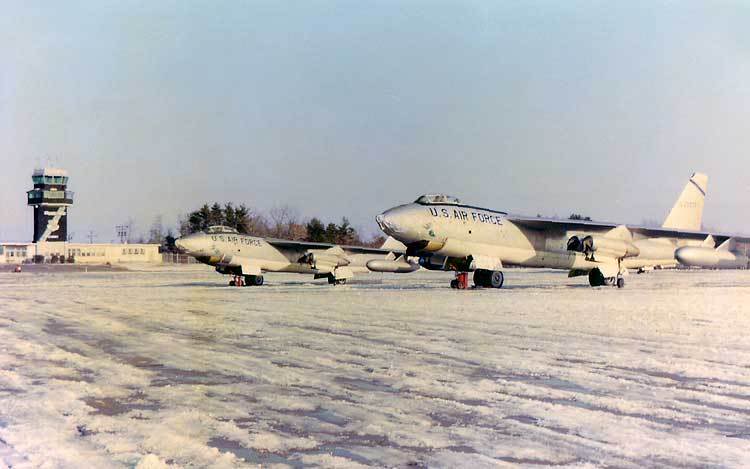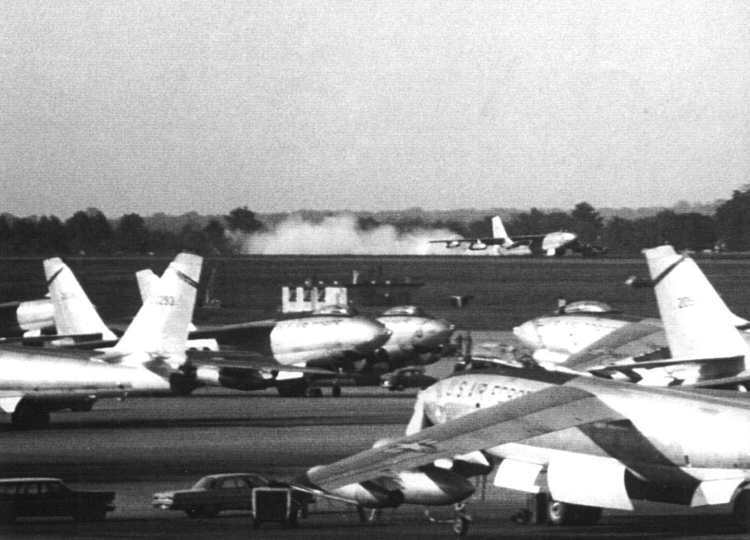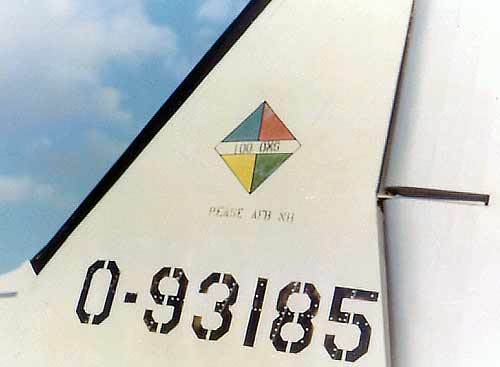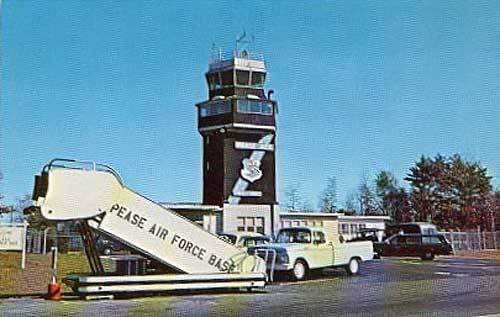|
PEASE AIR FORCE BASE
The Stratojet Years
by
Tom Hildreth
Of the Cold War's many symbols, none was more recognizable than the Berlin
Wall. Torn down by the city's residents in a widely publicized event in late
1989, the crumbling of the wall became a precursor to the huge military
drawdown that followed. The lessening of the ideological struggle between
east and west made possible the retirement of ageing weapons systems such as
the FB-111A medium bomber. These factors quickly rendered Pease AFB in
Portsmouth, New Hampshire to the status of Cold War artifact.
BACKGROUND
During the 1950s, the U.S. Air Force grew from a fledgling branch of the
military to a global force of great strength and influence. The backdrop of
this growth was the arms race, which was running at full tilt. The Air
Force's B-47 Stratojet program produced more than 2,100 of the Boeing medium
jet bombers, and SAC officials looked hard to find real estate from which to
operate this burgeoning fleet. Nearness to Europe and the North Atlantic air
routes made New England a prime choice for new base construction.
On October 7, 1954, the Air Force opened a liaison office in the Portsmouth
area. To the Air Force planners, the existence of the Portsmouth airport was
merely coincidental. Their sights were set on a large, sparsely populated
tract of land nearby which had the development potential needed to support a
huge bomber base. Situated between Great Bay to the west, the Piscataqua
River to the north, and Portsmouth to the east, this acreage was easily
reached by rail, highway and water.
Up to that point, the Portsmouth Municipal Airport had played only a small
role in the Granite State's development of aviation. Airline passenger
service was inaugurated on the Boston-Bangor Amber Civil Airway No. 7 on
August 11, 1933, with Portsmouth designated as an auxiliary landing field on
the route. During part of World War II, the airfield came under Army Air
Force jurisdiction, but was not used as a military airbase.
In December 1954 the 4018th Air Base Squadron was assigned to Portsmouth to
oversee the initial phase of base construction. On January 1, 1955, Col.
Andreas A. Andrea took command of the project. The new base was officially
named Portsmouth AFB in February. Land clearing and construction gained
momentum as the year passed.
BASE ACTIVATION
On January 1, 1956, the 100th Bomb Wing (BW) was activated at Portsmouth AFB
under the command of Col. James W. Chapman, Jr. This establishment had the
distinction of being the thirty-third and last B-47 wing to activate, and was
comprised of the 349th, 350th, and 351st Bomb Squadrons (BS), of 15 aircraft
each. The base was far from complete physically, but this did not slow
organizational expansion. The 100th Air Refueling Squadron (ARS), which
operated 18 Boeing KC-97 tankers, was assigned to the 100th BW on August 15,
1956.
The growing seacoast facility was renamed Pease AFB in honor of Capt. Harl
Pease, Jr. on September 7, 1957. Pease and his crew successfully bombed an
enemy airfield during a 1942 mission over Rabaul in the Pacific. Enemy
fighter opposition was heavy, and although the B-17's gunners downed several
of the enemy planes, the bomber failed to return to home base. Harl Pease
posthumously received the Medal of Honor for this action.
Construction of a badly needed 1,100-unit Capehart housing project was begun
in 1957. The importance of these and other expansions to Pease AFB became
obvious on July 1, 1958, when the 509th BW arrived on permanent assignment
from Roswell, New Mexico. This new organization was a descendent of the 509th
Composite Group, which had dropped the atomic bombs on Japan in 1945. The
wing's 393rd, 715th, and 830th Bomb Squadrons had flown the B-47 for several
years, and were quickly joined by the 509th ARS, a tanker unit that had been
at Pease for several months on temporary assignment to the 100th BW.
EXPANSION
The New Hampshire SAC installation was very busy in early 1959.
On March 1, each wing gained a fourth squadron, when the 418th BS was
assigned to the 100th BW, and the>661st BS was assigned to
the 509th BW. This augmentation was
needed to support SAC's One-Third Alert program. The program reached its
objective in May 1960 when one-third of the nation's bomber and tanker force
assumed 15-minute ground alert status. The program reached one-half alert
status in July 1961.
The 100th Bomb Wing operated from Pease AFB for ten years. In official
parlance, the establishment "...performed global strategic bombardment
training and air refueling missions." One of the most significant
overseas temporary duty assignments took place during the first four months
of 1958, when the 100th participated in the last full wing B-47 deployment.
During this time, the B-47s from New Hampshire operated from RAF station
Brize Norton, in the United Kingdom. Subsequently, overseas deployments
involved the simultaneous participation of several bomb wings.
EARLY DECLINE AND ORGANIZATIONAL INACTIVATIONS
As SAC missile forces grew in size and capability, the planned phase-out of
the medium bomber force gained momentum. Some B-47 wings converted to the
larger B-52 Stratofortress, but many others were inactivated. In October
1965, the Air Force initiated Project Fast Fly to oversee the inactivation of
the last five B-47 wings and supporting tanker squadrons. The 100th ARS
retired its last tanker on December 21, 1965, when aircraft 53-0282 flew to
the boneyard in Arizona. The following day the 100th ARS inactivated. The
100th BW retained its ground alert commitment at Pease until December 31,
1965, and inactivated on June 25, 1966.
In late 1965, the 509th Bomb Wing was also in the phase-down mode for
inactivation. However, on April 2, 1966, it was redesignated as a heavy bomb
wing, and reequipped with the B-52 Stratofortress and KC-135 Stratotanker.
For the next three years the 509th contributed to SAC operations in Southeast
Asia.
BASE CLOSURE
On April 1, 1991, after 36 years as a bomber base, Pease was closed as an
active Air Force installation. Most of the apron at what is now called Pease
International Tradeport is empty. Guilford Transportation Industry's Pan
American Airlines occupies the large DC hangar. Other than the immense size
of the place, today's activities offer no clue to the operational tempo of
the base during the Stratojet years. Then, when this flat expanse of concrete
was alive with men and machines, there was scarcely an inch to spare.
THE END
|
